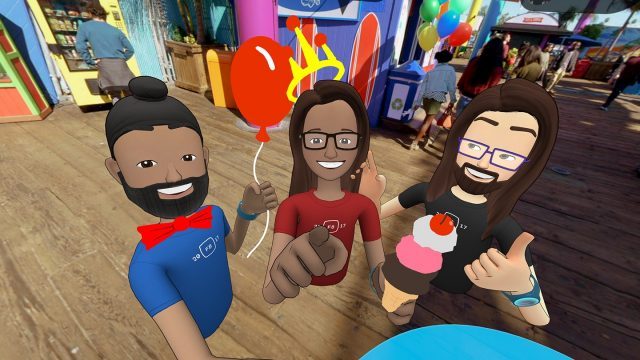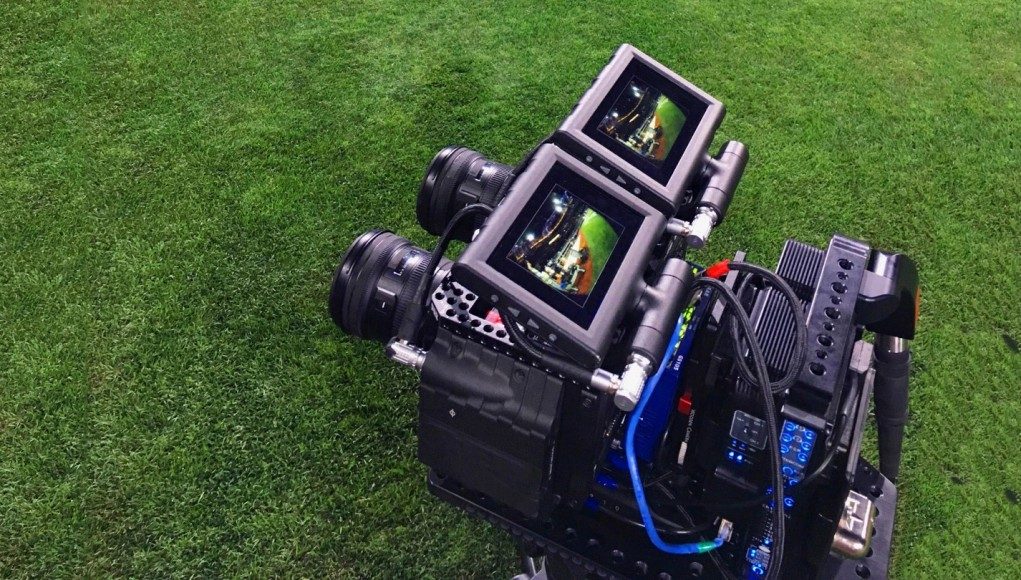Sports in VR is squarely in the realm of low-hanging VR that you often hear rattled off on five fingers when broaching the topic of industries VR will revolutionize. And while it’s easy to imagine, actual execution is a completely different story. With VR sports broadcasting deals being signed with the world’s biggest sporting leagues, the space is clearly maturing, but there’s still some missing pieces needed to boost this use case out of novelty and into orbit.
If you’ve got a Gear VR or Daydream headset handy, this week you can catch highlights of the NBA Finals games for free thanks to VR broadcasting specialists NextVR. The reels are well produced, featuring an exclusive commentator, broadcast audio streams, multiple camera angles, and CGI elements composited into the video feed. It’s a pretty impressive affair, and it’s starting to match the same production you might expect from a prime time sports broadcast:
The last 12 months has brought a clear maturation of VR sports broadcasting in both content—like the free weekly MLB games for the 2017 season—and production.
I’ve personally flitted about with all manner of VR sports broadcasting apps. I’ve watched clips of boxing matches, football games, soccer games, and the Olympics, but I have to admit that I’ve not sat down and watched a complete game/match/round of any sport in VR. And that’s because there’s still crucial pieces missing from the experience.
I recently took my gripes with the state of VR sports broadcasting to NextVR CEO David Cole to discuss what’s missing and why.
Let Me Watch With Friends (duh)

When it comes to entertainment, sports are rather unique. They are a primarily live affair, and a social one too.
‘The big game’ is prime time for sports fans to come together and watch the action unfold; but for many viewers, watching the entire game after it happens is not an attractive prospect. If it isn’t live, just checking the final score, and maybe watching a few highlights, suffices.
And while big VR sports broadcasters like NextVR and Intel’s True VR have the ‘live’ part down, the social element is completely missing. There’s perhaps a small number of hardcore sports fans that might watch entire sports games alone, but I’d be willing to wager than the vast majority of viewers watch with at least one friend.
Those stadiums full of people aren’t just set dressing, they’re the social aspect of sports incarnate. But when you pop on your headset to watch in VR, you are necessarily eliminating the ability to watch the game with anyone else—which doesn’t make a whole lot of sense for a form of entertainment that’s inherently social.

Given the choice, would you A) watch a sports game on a regular TV with friends, or B) watch a sports game in VR without friends? That’s the choice users have to make today, and it’s a problem.
So why can’t we watch VR sports broadcasts with friends yet? NextVR CEO David Cole raises a number of technical challenges to making this seemingly obvious feature a reality:
“There are some tricky issues in getting social interaction just right for live VR broadcasts. Conventional, segmented streaming infrastructures don’t allow for precise synchronization of video across multiple users in different locations, or using different ISPs or CDNs,” he said. “Imagine if you and I were watching [the NBA Finals] and you were 30 seconds ahead of me in the stream. If the point spread were tight and it was down to the wire, and you celebrated the winning 3-pointer before I saw it… well, that would suck.”
That said, Cole says that some form of social is coming to NextVR, and the company is actually in the midst of feature testing; he expects we’ll see social features this year, and my hope is that this will spur competitors to do the same.
He also raises an additional point about the nature of social viewing in VR sports broadcasting—exactly what should it be like? He suggests that one simple solution—a mere audio feed between viewers—might not go far enough.
“[…] have you ever tuned into a game at home and called a friend on the phone who’s watching somewhere else? Yeah, not me either. Something to consider.”







